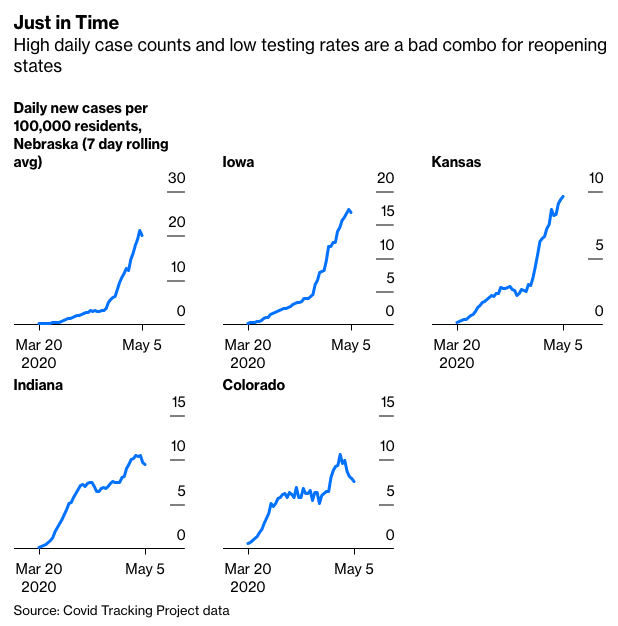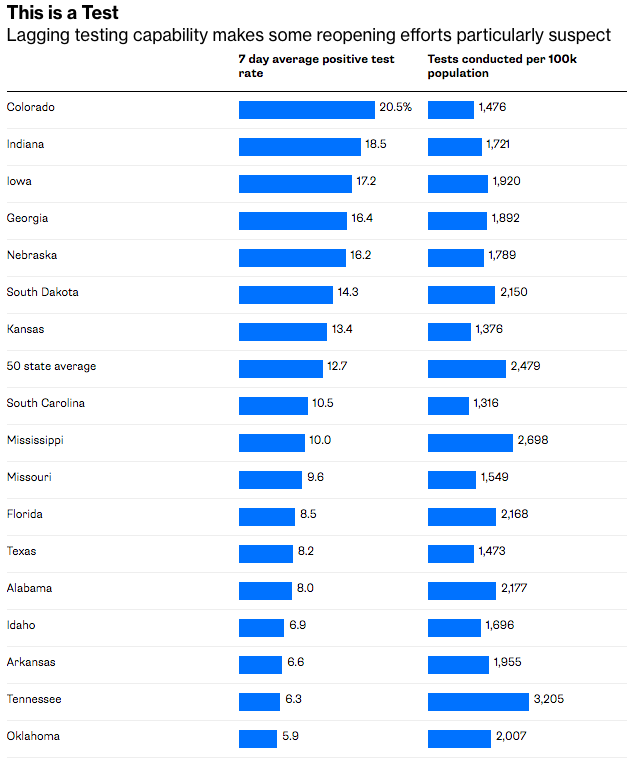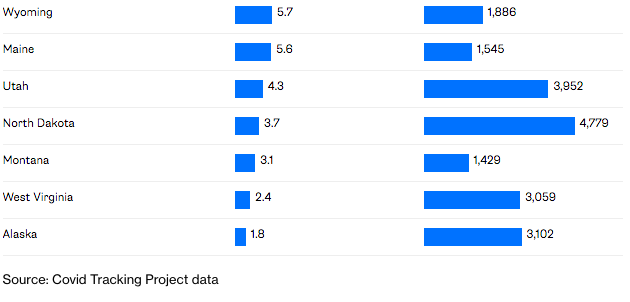More than a dozen states loosened lockdowns in the past week even though many have yet to fully control the spread of Covid-19.
The consequences won’t be visible in the data on infections for some time, because loosened state restrictions take time to generate more human contacts and infections, the coronavirus takes time to incubate, and tests take time to process. Yet there’s already reason to worry that several states are reopening too soon.
The case against loosening restrictions before outbreaks are well-controlled is dead simple: When there is a higher base level of infection in a population, it takes fewer interactions between individuals to spread the virus. That makes every step taken to mitigate the spread less effective, and every day that people spend in public more dangerous. When testing, contact tracing and the ability to isolate infected individuals is limited, as continues to be the case in large parts of the U.S., the risk is higher still.
There’s a great deal we don’t understand about why Covid-19 hits some areas harder than others. Spread is determined by a combination of factors that includes initial seeding, density, demographics, public health response and plain luck. Some states that never issued statewide stay-at-home orders, or put them in place late in the pandemic, have avoided major outbreaks, while others are now seeing many new infections. However, as states allow renewed activity, the harsh reality of viral spread will come into play.
States to be most concerned about are those where the rate of population-adjusted cases is still growing or elevated, and testing is limited. Nebraska, Iowa, Indiana, Colorado and Kansas all arguably fall into this category. Colorado at least has seen a reduction in average new cases over the past week or so, but because it remains close to its peak and testing is not up to speed, safety in reopening is not a sure thing.
States are moving forward in various ways. Nebraska and Iowa never had statewide stay-at-home orders, and both are now allowing many businesses to open at limited capacity. Indiana and Colorado are keeping many retailers and restaurants closed for in-store business. Kansas is taking a middle path, allowing restaurants to open dining rooms as long as they maintain distancing, but keeping gyms and personal service businesses closed. Time will tell if this variation leads to diverging outcomes, but the virus is poised to punish incautious moves.

None of the states in this chart are above average in either the number of tests being conducted per capita or in the rate of positive results—which indicates of the severity of an ongoing outbreak. A high percentage of positive tests suggests that many cases are going undetected, and that a testing capacity isn’t meeting the need, let alone providing the kind of expanded surveillance that should accompany reopening efforts.










